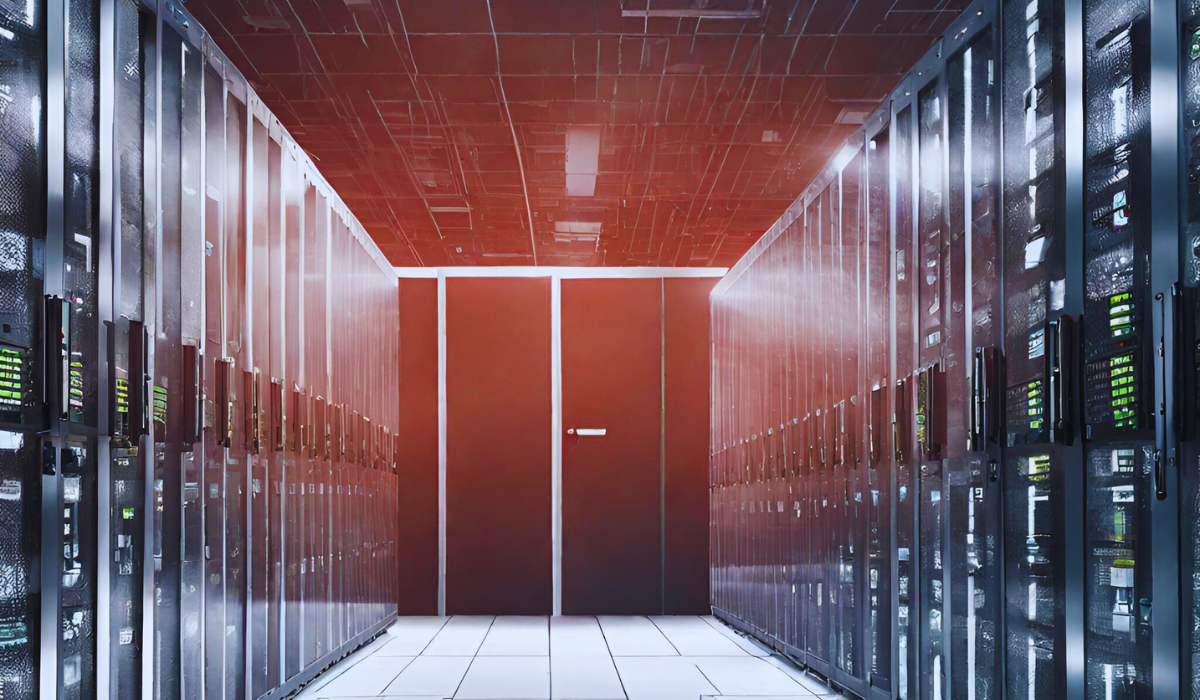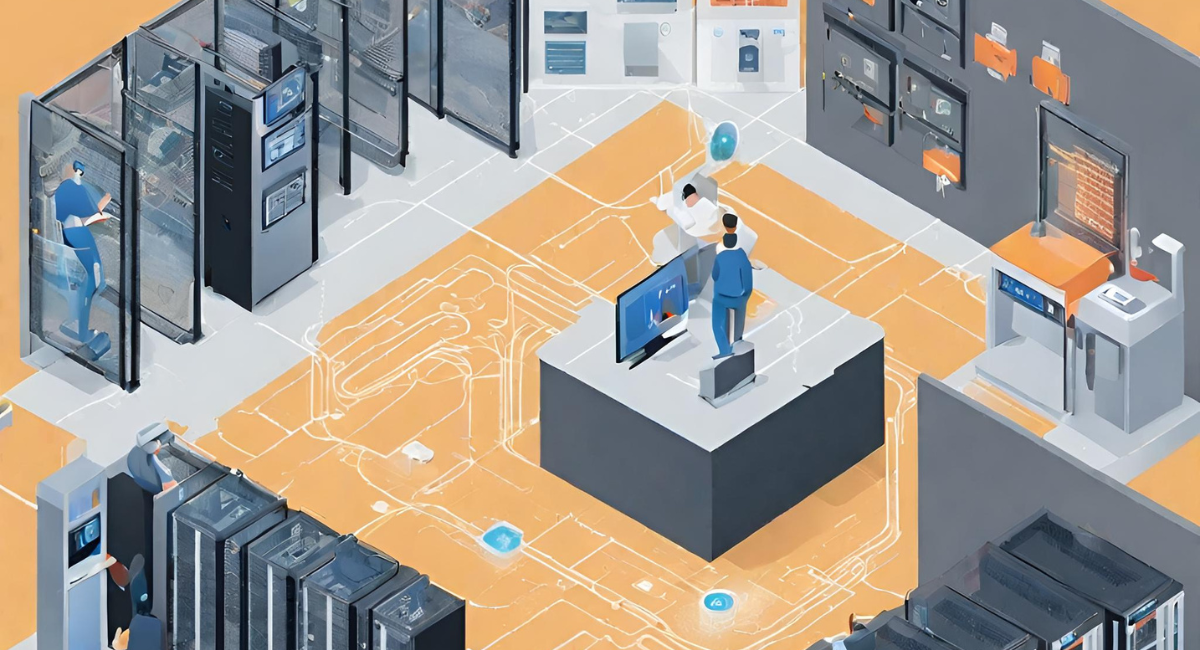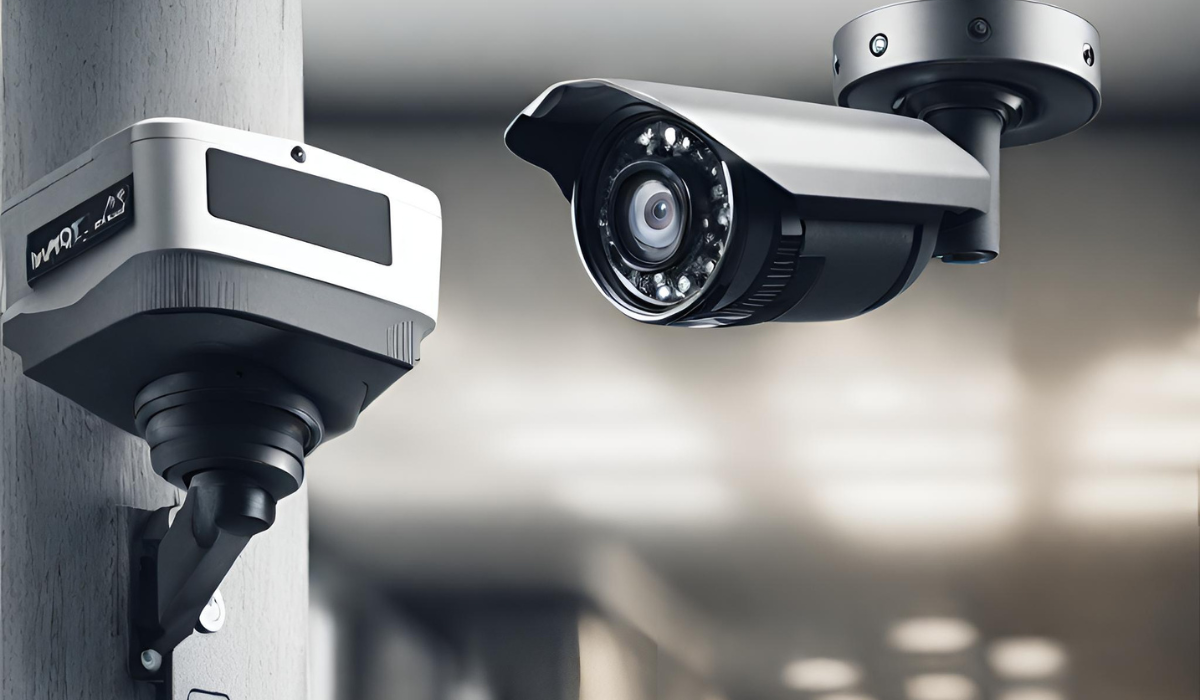Security cameras play a pivotal role in mitigating physical security risks in data centers by offering real-time surveillance, deterring unauthorized access, and assisting in investigations of security breaches, thereby complementing and enhancing other security measures in place.
Data has become one of the most valuable commodities in the digital age. As a result, data centers have become critical infrastructure for organizations to store and manage their data. However, the increasing reliance on data centers has also made them attractive targets for criminals. Physical security controls are put in place to protect these facilities, and one crucial component of these controls is security cameras.
Understanding Physical Security Controls in a Data Center

Data centers are highly secure facilities that house servers, network equipment, and data storage systems. Due to the sensitive nature of the information stored in them, data centers implement various security measures to safeguard against physical threats. These measures include access control systems, perimeter fencing, motion sensors, and security cameras.
Access control systems play an essential role in safeguarding data center security. These systems employ cutting-edge technology, such as key cards or biometric scanners, to exclusively limit entry to authorized personnel. By incorporating access control systems, data centers guarantee that only individuals possessing the requisite credentials can enter the facility.
In addition to access control systems, data centers utilize perimeter fencing to enhance physical security. The fencing acts as a physical barrier, preventing unauthorized individuals from easily accessing the facility. Reinforced doors and windows further strengthen the security measures, making it even more challenging for potential intruders to breach the data center.
Motion sensors and alarms are another important aspect of data center security. These sensors are strategically placed throughout the facility and designed to detect unauthorized movement. When triggered, the alarms alert security personnel, allowing them to respond promptly and investigate the potential threat. This early detection system prevents data theft, tampering, and sabotage.
One of the most significant components of data center security is security cameras. These cameras are strategically placed in various locations within the facility to provide comprehensive monitoring and surveillance. They capture and record all activities, allowing security personnel to review footage in case of any suspicious incidents. The presence of security cameras acts as a deterrent for potential intruders and provides valuable evidence in the event of an incident.
The Role of Physical Security in Data Protection
Physical security is the first line of defense against illegal/unauthorized access to a data center. While cybersecurity measures protect against virtual threats, physical security controls ensure that only authorized personnel can enter the facility. By mitigating the risk of physical breaches, these controls prevent data theft, tampering, and sabotage.
Unauthorized access to a data center can have severe consequences, including compromising sensitive information, financial loss, and damage to a company’s reputation. Physical security actions, such as access control systems and surveillance cameras, help minimize these risks by providing a robust defense system.
Physical security controls are also vital in ensuring industry regulations and standards compliance. Numerous organizations must follow particular security directives, like the Payment Card Industry Data Security Standard (PCI DSS) or the Health Insurance Portability and Accountability Act (HIPAA). Implementing physical security measures allows data centers to showcase their dedication to safeguarding sensitive information and, in turn, guaranteeing conformity with these regulations.
Key Components of Data Center Security

Data center security comprises several interconnected components. Access control systems, such as key cards or biometric scanners, restrict entry to authorized individuals. These systems prevent unauthorized access and provide an audit trail of who entered the facility and when.
Perimeter fencing, reinforced doors, and windows are physical barriers, making it difficult for potential intruders to access the data center. The fencing is often equipped with anti-climbing measures and intrusion detection systems to enhance security further.
Motion sensors and alarms are strategically placed throughout the data center to detect unauthorized movement. These sensors are sensitive to even the slightest motion and can trigger an alarm, alerting security personnel to a potential threat. The alarms can be integrated with a central monitoring system, ensuring a swift response to any security breach.
Among these components, security cameras play a vital role in monitoring and surveillance. These cameras are strategically positioned to cover the data center’s interior and exterior areas comprehensively. The footage taken by these cameras can be monitored in real-time or reviewed later to identify any suspicious activities or incidents.
Furthermore, data centers often employ trained security personnel to respond to security incidents effectively. These personnel monitor security systems, conduct regular patrols, and respond to alarms or alerts. Their presence adds a layer of security and ensures a swift response to potential threats.
The Importance of Security Cameras in a Data Center
Security cameras have been integral to data center security for many years. They serve as a deterrent and provide valuable evidence in case of incidents. Over time, security cameras have evolved to meet data center security’s changing needs and challenges.
The Evolution of Security Cameras in Data Centers
Early security cameras were bulky, low-resolution devices that recorded video on tapes. However, technological advancements have led to the development of high-definition digital cameras that can capture detailed footage of the entire data center. These cameras can be integrated with other security systems to enhance overall protection.
With the rise of cloud computing and the increasing importance of data centers in various industries, the demand for more advanced security cameras has grown. Data centers now require cameras that provide clear and crisp images, even in low-light conditions. This ensures that every corner of the data center is under constant surveillance, leaving no blind spots for potential threats.
Moreover, the evolution of security cameras in data centers has also brought about the integration of intelligent video analytics. These analytics can detect and alert security personnel of suspicious activities or unauthorized access attempts. This proactive approach to security allows data center operators to respond swiftly and effectively to potential threats, preventing any breaches before they occur.
Security Cameras as a Deterrent to Unauthorized Access
Visual surveillance plays a critical role in deterring potential intruders. The presence of security cameras sends a clear message to anyone with malicious intent that their actions will be recorded and investigated. This alone can significantly reduce the likelihood of security breaches and lessen the risk to the data center.
Furthermore, the advancements in security camera technology have made them more conspicuous yet unobtrusive. Modern security cameras can blend seamlessly into the data center environment, making it difficult for intruders to identify their exact locations. This covert surveillance adds an extra layer of security, as potential attackers will be unaware of the extent of the surveillance and may hesitate to proceed with their plans.
In addition to deterring unauthorized access, security cameras also play a crucial role in monitoring employee behavior within the data center. Data center managers can strategically place cameras to ensure that employees follow security protocols and best practices. This helps maintain the data center’s integrity and promotes a culture of security awareness among the staff.
Furthermore, security cameras are vital in aiding investigations and managing incidents. If a security breach or incident occurs, the recorded video footage from these cameras can serve as valuable evidence for identifying those responsible and comprehending the chronological order of events. This evidence holds significant importance in legal proceedings and prevents future similar incidents.
In conclusion, security cameras have come a long way in ensuring the safety and protection of data centers. Their evolution in terms of technology and functionality has made them an indispensable tool in deterring unauthorized access, monitoring employee behavior, and providing valuable evidence in case of incidents. As data centers play a vital role in our increasingly digital world, the importance of security cameras in safeguarding sensitive information and infrastructure cannot be overstated.
How Security Cameras Enhance Other Security Measures

While security cameras are effective on their own, their value is maximized when integrated with other security measures within a data center.
Integration of Security Cameras and Access Control Systems
When security cameras are connected to access control systems, they provide an additional layer of verification. For example, if an unauthorized individual attempts to enter a restricted area, the security camera can capture the incident and trigger an alarm. This integration ensures a swift response to potential security threats.
Security Cameras and Intrusion Detection Systems
Intrusion detection systems monitor the data center for any unusual activity. By integrating security cameras with these systems, data center operators can visually verify the alarms triggered by the intrusion detection system. This enables prompt action, such as contacting security personnel and initiating a lockdown if necessary.
The Future of Security Cameras in Data Center Security
Data center security is constantly evolving, and security cameras are no exception. Advancements in technology continue to improve the capabilities and effectiveness of security cameras.
Advances in Security Camera Technology
Emerging technologies such as facial recognition, artificial intelligence, and machine learning are revolutionizing security camera capabilities. These advancements enable cameras to detect suspicious behavior, identify individuals, and respond autonomously to threats. By leveraging these technological advancements, security cameras can enhance the overall security posture of data centers.
Predicted Trends in Data Center Security Measures
As data centers become more complex and critical to organizational operations, new security measures will be developed to address emerging risks. Security cameras will continue to play a central role in these measures, evolving to meet the threats. Some predicted trends include increased use of cloud-based surveillance systems, 360-degree cameras for comprehensive coverage, and analytics-driven video monitoring.
Key Takeaways
- Central Role of Cameras: Security cameras are a critical component of data center physical security, providing comprehensive monitoring evidence gathering, and acting as a deterrent against unauthorized access.
- Integration with Other Systems: When combined with other security measures like access control and intrusion detection, cameras enhance the overall security posture of a data center.
- Technological Advancements: Modern cameras benefit from advancements like high-definition, AI, facial recognition, and machine learning, enabling more precise monitoring and proactive threat responses.
- Employee Monitoring: Beyond external threats, cameras also ensure that employees within a data center adhere to security protocols and best practices.
- Evolving with the Times: The role and functionality of security cameras in data centers will continue to evolve, adapting to new challenges and technological breakthroughs.
FAQs
Why are security cameras essential for data center security?
Security cameras deter unauthorized access, provide real-time monitoring, and assist in investigating security incidents.
How do security cameras integrate with other security systems in a data center?
They can be integrated with access control systems for added verification and intrusion detection systems for visually verifying alarms.
What advancements in technology are impacting security camera capabilities?
Technologies such as facial recognition, artificial intelligence, and machine learning are enhancing the capabilities of security cameras, allowing them to detect suspicious behavior and respond autonomously.
How do security cameras enhance the compliance aspect of data centers?
Physical security measures, including surveillance cameras, demonstrate a commitment to protecting sensitive data, which can help ensure compliance with industry regulations like PCI DSS and HIPAA.
What are the predicted trends for security cameras in data center security?
Predicted trends include cloud-based surveillance systems, 360-degree cameras, and analytics-driven video monitoring.
Conclusion
Security cameras have evolved significantly, making them indispensable in ensuring the safety of data centers in our digital age. By deterring unauthorized access, overseeing employee conduct, and offering irreplaceable evidence during incidents, their importance in fortifying sensitive data and infrastructure is paramount. Coupled with ongoing technological advancements, security cameras remain a vital tool in data centers’ arsenal of physical security measures.
